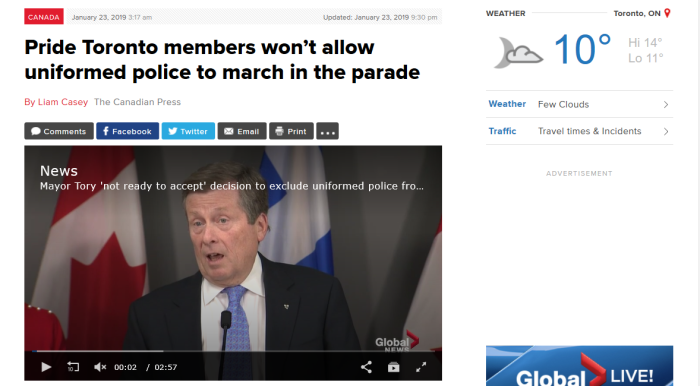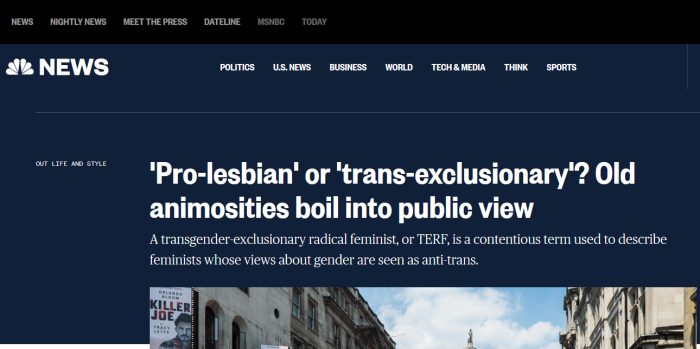(We’re tolerant, except to police officers)

(Pride: lesbians v.s. transgenders)

(Brown and black added for “racial inclusion”)

Serious question: What is the ultimate goal of the LGBT movement?
- Achieving equality and acceptance in mainstream life
- Constantly viewing itself as a victim in need of protection
- Both (1) and (2)
We live in a country where gays and trans have full equality under the law, and have for many years.
So called “marriage equality” was settled in Canada back in 2005. That’s right, 14 years ago. There are also provisions in every Provincial human rights code to protect sexual orientation. And hate crime provisions have existed for many years in the Criminal Code.
We also live in a country where being trans is protected, and employers and schools are required to make accommodations. Bill C-16 seems to be both poorly written and overkill.
You would think all is great, but not so. Despite the very limited scientific knowledge on gender dysphoria, we are prohibited from questioning it, even in young children. Even in our children. Questioning if changing gender is possible will now net a hefty fine. Bake-my-cake-or-I’ll-sue is no longer just a punchline, at least in Colorado. And SOGI has creeped into elementary schools.
Note: The issues and concerns with how gender dysphoria is treated will be a topic for another post. Likewise with having young children transition.
The problem with advocacy groups is that they eventually run out of grievances to protest. And the need to celebrate a movement becomes less and less important.
If misgendering people, or suing over wedding cakes is the worst we have going on, then what genuine causes are left?
Answer: No serious causes.
Since LGBT people enjoy full rights, and equality under the law, why does this need to be flaunted in public every Spring/Summer? Isn’t the ultimate goal to live freely and without stigmatization as your true self? This is what activists don’t seem to realize.
And while a small march or parade seems harmless enough, some larger Prides are downright raunchy (Toronto is a specific example). Nudity and lewd behaviour do often happen, at sites where children are present. For the sake of readers, I’ll spare the details. What this does to promote equality is beyond me.
If LGBT people want to just go about their lives, nothing stops them. Legally, nothing can stop them, and the vast majority of people don’t care. Prides (and other such events) detract from this by bringing the issue up again and again, throwing it in the public’s face.
Yes, people had their rights violated in the past, but that ended decades ago. It doesn’t help to bring it up with people who had absolutely no involvement. It also doesn’t help when municipalities fund (all or in part) of these movements.
As an aside, LGBT activists often get triggered at the idea (often trolling) of a “straight pride”. Well, identity cuts both ways, doesn’t it?
Having equality is an important part of this nation, but your orientation or identity isn’t. It doesn’t need to be forced on the public. Rather, Canada should focus more on what built the nation, and what holds it together.
The question at the start seemed rhetorical, but is not. Activists want option (3).
Guys, you won. Go live your lives.

